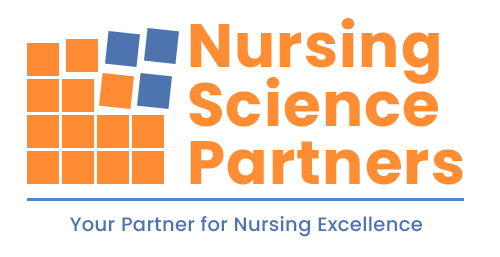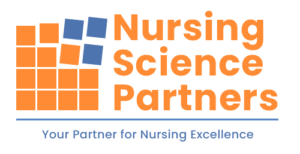

Nurses navigate an ever-evolving healthcare environment, constantly adapting to meet growing demands. Continuing education enables them to maintain clinical excellence, stay current with innovations, and ultimately deliver improved patient outcomes. From immersive technologies to flexible curricula and team-based learning to global perspectives, modern training solutions are reshaping how nurses acquire critical skills and certifications.
Continuing Education for Nurses Embracing Emerging Tech
Emerging technologies transform how nurses access learning content. Virtual tools and AI support interactive skill development. Additionally, mobile platforms bring education directly to nurses. These solutions address primary training challenges in the healthcare industry.
Virtual Reality Simulations
Virtual reality (VR) places nurses in realistic but risk-free clinical scenarios where they can rehearse high-stakes procedures until they achieve mastery. By simulating emergencies and complex patient encounters, VR reduces training time and enhances decision-making under pressure. Institutions report faster skill retention and increased learner confidence when virtual reality is integrated into their programs.
Artificial Intelligence–Powered Learning
AI-driven platforms analyze individual performance data to craft customized learning journeys. Adaptive assessments challenge nurses just enough to stretch their skills, while chatbots and recommendation engines supply instant answers and targeted modules. Early adopters have seen higher certification pass rates and more efficient remediation of knowledge gaps thanks to AI’s real‑time feedback and personalized guidance.
Mobile Microlearning
Smartphone and tablet apps bring bite‑sized lessons, quizzes, and multimedia case studies directly to nurses whenever and wherever they have a spare moment. Push notifications remind learners of upcoming deadlines, and offline modes ensure access in low‑connectivity zones. Usage analytics continually inform content updates, making mobile microlearning a powerful tool for just‑in‑time skill reinforcement.
Continuing Education for Nurses With Flexible Curriculum
Curriculum flexibility meets each nurse’s unique scheduling constraints. Micro-credentials enable nurses to earn specialized skill badges quickly. Similarly, modular courses allow learners to select focused topic blocks. Flexible paths support nurses in balancing their work, life, and studies.
Micro‑Credentials and Digital Badges
Short, focused courses enable nurses to earn digital badges in specialized competencies, ranging from wound care to pharmacology. These micro‑credentials stack toward complete certifications, giving clear, achievable milestones that motivate ongoing engagement. Employers value these verifiable skills, and partnerships between educational providers and healthcare facilities ensure that the curriculum remains relevant.
Self‑Paced Learning Paths
Self‑paced modules allow learners to pause, practice hands‑on skills on the job, and return to coursework at their convenience. Progress‑tracking dashboards and automated reminders keep nurses on track, while online discussion boards foster peer support across time zones. Studies show that self‑paced learners not only experience lower stress but also complete programs at higher rates.
Continuing Education for Nurses Focusing on Team Collaboration
Team collaboration fosters shared learning and peer support, promoting a culture of mutual growth and support. Virtual workshops bring together nurses from various specialties freely. Similarly, case studies involve cross-disciplinary problem-solving. Peer communities sustain motivation through regular check-ins and ongoing support.
Team-Based Virtual Workshops
Interactive workshops break down complex topics into small‑group problem‑solving exercises. Facilitators guide mixed-role teams through simulated scenarios, and participants critique each other’s approaches in real-time. Such sessions strengthen trust, sharpen communication, and lead to more cohesive patient care strategies.
Cross-Disciplinary Case Studies
By working alongside pharmacists, therapists, and other allied health professionals on integrated case studies, nurses develop holistic thinking to address the multifaceted needs of patients. Follow-up webinars and collaborative debriefs ensure that best practices evolve in tandem with the latest clinical evidence.

Online Peer Learning Communities
Moderated forums and scheduled “office hours” let nurses share real‑world experiences, ask questions, and receive expert insights quickly. Group challenges and accountability check‑ins keep motivation high, driving up course completion and satisfaction rates.
Continuing Education for Nurses via Personalized Paths
Personalized learning tailors content to each nurse’s competency gaps. Adaptive systems continuously adjust the difficulty level based on the learner’s performance. One-on-one expert consultations guide each nurse’s journey. Data-driven insights reveal strengths and areas needing extra focus. This approach ensures that every nurse advances at a pace that is optimal for them.
Adaptive Learning Systems
Adaptive systems monitor quiz results to adjust future lessons. They shorten sections on well-known topics and expand weak areas. Similarly, interactive scenarios adapt in complexity as skills grow. Learners report feeling challenged but never overwhelmed by courses. Institutions see improved knowledge retention with adaptive platforms. These systems free educators to mentor on nuanced clinical issues.
Data-Driven Progress Tracking
Dashboards display real-time metrics on individual learning journeys. Nurses view completed modules, quiz scores, and time spent. Managers track team progress to plan targeted workshops. Additionally, automatic alerts trigger when nurses miss key benchmarks. Data transparency promotes accountability across all learning stakeholders. Programs evolve based on aggregated performance trends over months.
Learner Profiles
Profiles compile each nurse’s certifications, specialties, and interests. Systems recommend new courses that are effectively aligned with career goals. Similarly, integration with HR records simplifies credential renewal. Profiles personalize communications about relevant upcoming training events. Nurses update preferences to keep recommendations fresh and valuable. Organizations use profiles to identify talent and succession candidates.
Writing and Editing Proficiency
Courses teach nurses clear documentation and editing skills. Strong charting notes improve team communication and patient safety. Learners practice concise report writing in real-world scenarios. Feedback refines their clinical writing and proofreading accuracy. This module boosts confidence in all professional communications.
Feedback Loops
Frequent surveys collect learner feedback after each module. Instructors adjust content rapidly based on that input directly. Additionally, peer reviews highlight areas that need further clarification. Feedback loops ensure courses stay current with clinical advances. Nurses feel heard and invested in continuous program improvement. Program evaluations cite feedback loops as crucial drivers of quality.
Continuing Education for Nurses Facing Compliance Trends
Evolving regulations drive requirements for ongoing nurse education. Online accreditation streamlines the process of meeting diverse state standards quickly. Global credential recognition facilitates a smooth transition for nurses relocating internationally. Tracking systems log hours and competencies automatically.
Online Accreditation Standards
Accrediting bodies publish updated criteria on digital platforms swiftly. Courses undergo regular audits to maintain approved status continuously. Similarly, compliance dashboards alert providers to expiring approvals. Learners receive certificates that meet each state’s specific mandates. Institutions integrate accreditation APIs to streamline record-keeping tasks. Accredited online courses enhance nurses’ confidence in the legitimacy of the program.
Global Credential Recognition
International agreements increasingly accept foreign nursing credits directly. Standardized exams complement online coursework for worldwide validation. Additionally, digital badges display credential details in verifiable formats. Nurses transfer credits easily when changing countries or roles. Universities partner globally to harmonize education standards across borders. This movement significantly expands professional mobility for nursing staff.
Continuing Competency Requirements
Boards require a set number of hours in key topic areas. Systems track competencies such as palliative care and infection control. Alerts notify nurses of impending deadlines to renew critical certifications—additionally, refresher modules target gaps identified in past reviews. Maintaining competency directly enhances patient safety and the quality of care. Organizations prioritize compliance to avoid penalties and license suspensions.
Continuing Education for Nurses Featuring New Delivery Models
Delivery models have evolved to accommodate the busy lifestyles of modern nurses. Blended learning seamlessly blends online theory with in-person practice. On-demand webinars allow nurses to join sessions at their convenience. Social networks support knowledge sharing and informal mentorship.
Blended Learning Approaches
Blended programs schedule hands-on labs after online theory lessons. Learners master foundational concepts virtually before arriving on-site. Similarly, video demonstrations prepare nurses for live skill stations. This mix optimizes resource utilization and enhances practical expertise. Institutions report higher satisfaction compared to fully online formats. Blended models strike a balance between flexibility and essential hands-on experiences.
On-Demand Webinar Series
Recorded webinars cover trending topics and expert panel discussions. Nurses watch sessions during breaks or off-shift hours comfortably. Interactive polls and Q&A features engage attendees actively. Additionally, transcripts allow quick scanning for key highlights. Webinar libraries continue to grow to address emerging healthcare issues.
Metrics on viewership guide planning for future webinar topics.

Continuing Education for Nurses With Global Perspectives
Global perspectives broaden nurses’ understanding of diverse care models and approaches. Cross-cultural training prepares nurses for work in varied settings. Language and communication skills improve interactions with all patients. Virtual exchanges connect nurses across continents for shared learning and professional development.
Cross-Cultural Training Modules
Modules explore the cultural norms that significantly affect patient preferences. Nurses learn respectful practices for end-of-life care differences. Similarly, diet and family roles receive culturally sensitive coverage. Practical scenarios illustrate the adjustments required for effective communication in diverse communities. These courses reduce misunderstandings and improve patient trust. Feedback shows better patient satisfaction in culturally matched settings.
Language and Communication Skills
Specialized courses teach medical terminology in multiple languages. Role-play exercises develop both verbal and nonverbal fluency. Additionally, translation apps integrate seamlessly with lesson content. Nurses build confidence in speaking clearly with non-English speakers. Clear communication reduces errors and enhances patient adherence. Institutions praise improved discharge instructions for diverse populations.
Global Health Modules
Topics cover tropical diseases and international public health issues. Students analyze case studies from low-resource clinical settings. Similarly, humanitarian nursing principles guide care during times of crisis. These modules raise awareness of global health equity challenges. Nurses apply lessons to local underserved communities immediately. Global health knowledge fosters advocacy for vulnerable patient groups.
Virtual Exchange Programs
Live video collaborations pair classrooms across different time zones. Nurses observe peers handling real-world clinical scenarios abroad. They discuss approaches and troubleshoot challenges together virtually. Additionally, joint projects build cross-border professional relationships. Exchange programs broaden perspectives on healthcare systems worldwide. Participants report greater cultural empathy and innovative care ideas.
International Accreditation Insights
Workshops decode varying certification rules in major nursing markets. Experts compare standards from North America, Europe, and Asia. Similarly, guidance covers credential equivalency and licensure transfers. Nurses plan career moves overseas with more precise accreditation roadmaps. Up-to-date insights prevent costly re-training and exam redundancies. This clarity empowers nurses to pursue truly global careers.
Continuing Education for Nurses With Funding Alliances
Funding and partnerships expand access to lifelong nurse education. Scholarships and grants relieve financial barriers for busy nurses. Corporate and nonprofit alliances co-develop cutting-edge training programs. Government reimbursements encourage institutions to offer affordable courses.
Healthcare Grants and Scholarships
Foundations award grants to nurses seeking specialized training opportunities. Scholarship portals list options by region and topic area. Additionally, employers sponsor study funds for high-need specialties. Application guides simplify the process and boost award success rates. Nurses leverage financial aid to advance into leadership positions.
Grant programs promote diversity in advanced practice and research roles.
Corporate Sponsorships
Medical device companies underwrite training on new technologies directly. Pharmaceutical firms host workshops on the latest medication safety protocols. Similarly, tech partners fund the development of custom e-learning modules. Sponsors gain feedback loops to refine their product training offerings. These collaborations reduce costs for participating nurses and agencies. Nurses stay current on industry-leading innovations affordably.
Government Reimbursements
Health departments reimburse continuing education through tax incentives. Reimbursement caps encourage nurses to select the highest-impact courses. Additionally, grants support training initiatives in rural and underserved communities. Policy updates publicly list eligible programs and funding levels. Reimbursements offset costs for nurses serving high-demand areas. These supports boost workforce capacity where it matters most.
University Partnerships
Colleges partner with hospitals to co-create specialized certificate programs. Clinical rotations tie academic theory directly to patient care settings. Similarly, universities offer discounted rates for hospital-affiliated nurses. Joint advisory boards ensure that the curriculum aligns with real-world needs and requirements. Pathways exist from certificates to advanced degree programs easily. These alliances produce practice-ready graduates on accelerated timelines.
Nonprofit Collaborations
Nonprofits team with nursing schools to offer free webinars statewide. They fund community health workshops addressing social determinants. Additionally, volunteer mentors guide nurses through complex case scenarios. Joint initiatives proactively address emerging public health crises. These collaborations amplify the reach and impact of continuing education. Participants gain both knowledge and professional networking opportunities.
Continuing Education for Nurses Demands Urgent Action
Nurses hold the key to healthcare’s ongoing evolution now. Adopting innovative continuing education boosts both skill and confidence. Your next training choice can instantly reshape your career trajectory. Enroll in a forward-thinking program and propel your nursing career.
Elevate your nursing practice. Read the latest posts on our Nursing Science Partners blog.
Last modified: August 22, 2025



